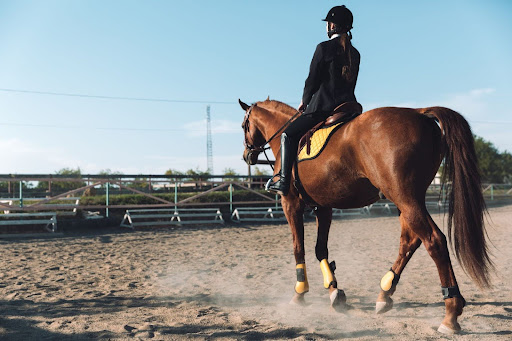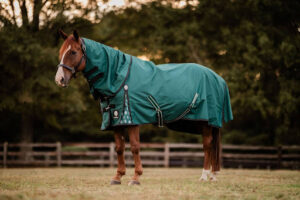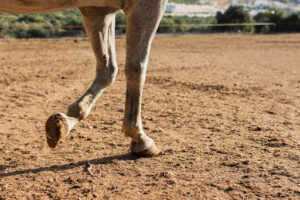Tips to Help Your Horse Cool Down After Exercise
Every horse owner knows that feeling when you’ve just finished a great ride with your equine companion. Your horse is breathing hard, maybe sweating a bit, and you want to make sure they’re comfortable and safe as they recover. Learning the right tips to help your horse cool down after exercise isn’t just good horsemanship—it’s […]

Every horse owner knows that feeling when you’ve just finished a great ride with your equine companion. Your horse is breathing hard, maybe sweating a bit, and you want to make sure they’re comfortable and safe as they recover. Learning the right tips to help your horse cool down after exercise isn’t just good horsemanship—it’s essential for your horse’s health and well-being.
Proper horse cooling techniques can prevent serious issues like muscle soreness, heat stress, and even life-threatening conditions. Whether you’re dealing with a hot summer day or just finished an intensive training session, these proven strategies will help your horse recover safely and comfortably.
Why Post-Exercise Horse Care Matters More Than You Think
Before diving into the specific tips to help your horse cool down after exercise, it’s important to understand why this process is so crucial. During physical activity, horses generate significantly more heat than humans, and primarily cool themselves through sweating, which can be less efficient in hot or humid conditions.
When you skip or rush the cooling process, you’re putting your horse at risk for muscle cramping, dehydration, and potentially dangerous overheating. Think of cooling down as an investment in your horse’s future performance and comfort. A horse that’s properly cooled after each ride will be happier, healthier, and more willing to work with you next time.
Start Your Horse Cooling Routine While Still in the Saddle
Start cooling down your horse effectively even before you dismount after exercise. As your riding session winds down, gradually transition your horse to a slower pace. Allow them to walk for at least ten to fifteen minutes, letting them stretch their neck long and low.
This gentle walking period helps your horse’s heart rate return to normal gradually while encouraging deep breathing. The stretching motion also helps relax tense muscles and promotes better circulation. If possible, consider dismounting and walking your horse in hand—removing your weight gives their back muscles additional relief during this crucial recovery period.
Also Read: The Complete Guide to Hoof Boot Fitting (and Common Mistakes to Avoid)
Remove Tack Strategically for Maximum Comfort
Smart tack removal is another key element in effective horse cooling techniques. Start by loosening your horse’s girth and noseband immediately after exercise, then remove the saddle and any boots as soon as it’s safe to do so. This simple step allows air to circulate freely around your horse’s body, preventing heat from getting trapped against their skin.
Pay special attention to removing boots or wraps from your horse’s legs. These protective pieces can trap significant heat, and leaving them on too long can hinder the cooling process. Your horse will appreciate the immediate relief as air reaches previously covered areas.
Master the Art of Cold Therapy for Horses
The most effective way to cool your horse involves continuous water application rather than the old-fashioned scrape-and-repeat method many of us learned.
Apply cool or cold water generously to your horse’s large muscle groups—the neck, shoulders, chest, and hindquarters. Keep the water flowing for twenty to thirty minutes, allowing it to drip off naturally. Contrary to old beliefs, you don’t need to scrape the water off immediately. The water itself absorbs heat from your horse’s body, and continuous application is far more effective than intermittent hosing.
Don’t worry about using cold water—it’s perfectly safe and more effective than lukewarm water for rapid cooling. Some horse owners worry that cold water might cause shock or cramping, but research has consistently shown this isn’t the case. Cold water can drop your horse’s body temperature more quickly and safely than any other method.
For managing inflammation, you can use ice boots for horses. They’re convenient and one of the most effective ways of administering cold therapy, enabling improved joint and tendon health.
Enhance Cooling with Smart Environmental Management
Creating the right environment is crucial for effective horse cooling after exercise. Always move your horse to a shaded, well-ventilated area for the cooling process. Direct sunlight adds unnecessary heat load and works against your cooling efforts.
If you have access to fans, use them strategically. A strong fan creating airflow over your wet horse can significantly enhance the cooling process through increased evaporation. The combination of water and air movement is particularly effective in humid conditions where natural evaporation is limited.
Consider the timing of your rides, too. While we can’t always control when we exercise our horses, avoiding the hottest parts of the day when possible makes the entire cooling process easier and more effective.
Also Read: Horse Leg Protection Guide: Types of Horse Boots and Leg Wraps
Keep Your Horse Properly Hydrated Throughout Recovery
Hydration plays a vital role in effective horse cooling techniques. Offer your horse clean, cool water immediately after exercise and throughout the cooling period. There’s no need to restrict water access—horses can safely drink during and after cooling without any risk of colic or other issues.
For horses that have sweated heavily during exercise, consider adding electrolytes to their feed. This helps replace important minerals lost through sweat and encourages your horse to drink more.
Monitor Your Horse’s Recovery Progress
Learning to read your horse’s vital signs is one of the most valuable tips to help your horse cool down after exercise safely. Check your horse’s heart rate, breathing, and general demeanor throughout the cooling process. A normal resting heart rate for adult horses ranges from twenty-eight to forty beats per minute.
Continue cooling until your horse’s breathing returns to normal and they’re no longer actively sweating. This typically takes thirty to sixty minutes, depending on the intensity of exercise and environmental conditions. Trust your instincts—if something seems off or your horse isn’t recovering as expected, don’t hesitate to contact your veterinarian.
Special Considerations for Different Weather Conditions
Effective horse cooling strategies need to adapt to different weather conditions. In hot, humid weather, focus heavily on water cooling and air movement since natural evaporation is less efficient. Cold water becomes even more valuable in these conditions.
During cooler weather, you’ll still want to use water for cooling, but you might need to use coolers or sweat sheets once your horse is thoroughly cooled to prevent chills. The key is ensuring your horse is completely cooled before adding any coverings that might trap heat.
Also Read: Essential Horse Riding Gear: What You Truly Need to Get Started
When to Seek Professional Help
While these tips to help your horse cool down after exercise work for most situations, there are times when professional veterinary assistance is necessary. If your horse’s vital signs don’t return to normal, if they seem unusually distressed, or if you notice signs like excessive lethargy or continued rapid breathing, contact your veterinarian immediately.
Remember that older horses, overweight horses, or those in poor condition may need extra time and attention during cooling. Don’t rush the process—your horse’s safety and comfort should always be the top priority.
Conclusion
Implementing these horse cooling techniques consistently will benefit both you and your horse in the long run. A properly cooled horse recovers faster, performs better in subsequent rides, and develops a positive association with exercise. Take the time to cool your horse properly after every ride, regardless of intensity or duration.
By following these horse care tips to help your horse cool down after exercise, you’re not just caring for your horse in the moment—you’re investing in their long-term health, comfort, and performance. Your horse will thank you with better rides, improved attitude, and years of happy partnership together.







